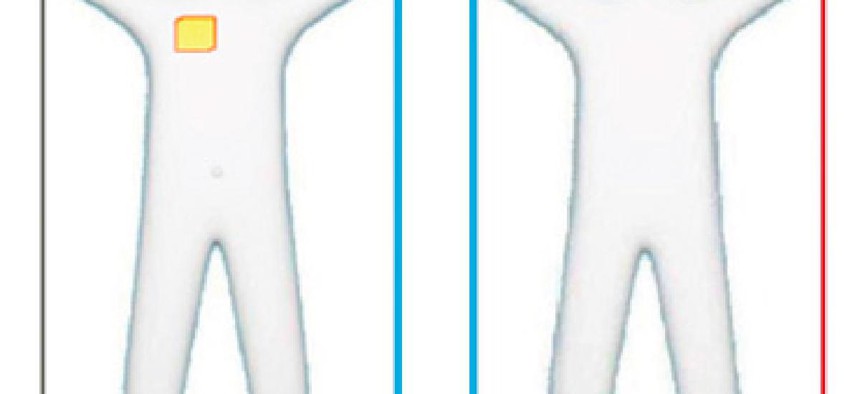TSA completes addition of privacy software to airport scanners

The days of revealing full-body scans that some called a 'digital strip search' are over.

Airport security scanners equipped with ATR software render generic figures indicating the location of any suspicious objects, rather than the realistic images that had earlier raised privacy concerns. (AP photo)
The Transportation Security Administration has installed privacy software on all of its airport security electronic screening devices, putting an end to what some said were excessively revealing images of air travelers, according to agency administrator John Pistole.
In a May 24 letter to House Homeland Security Committee Chairman Michael McCaul (R-Tex.) and ranking minority member Bennie Thompson (D-Miss.), Pistole said the agency has completed fitting its Advanced Imaging Technology (AIT) screening machines at airports around the country with Advanced Target Recognition (ATR) software.
The ATR software turns the stark x-ray-like images that AIT machines produce into a generic outline of a human body with the general location of possible weapons or questionable objects highlighted.
The agency will also require the ATR software on all future scanners it acquires, he said. The latest Federal Aviation Administration regulation deadline required TSA to install the ATR software by May 31, after Pistole requested an extension last June.
The process began last January, when Pistole ended a $5 million contract with the maker of its AIT scanner, Rapiscan Systems, owned by OSI Systems. TSA and OSI reached an agreement ending the use of the Rapiscan backscatter x-ray devices because the company said the system wouldn't meet the May 31 ATR installation deadline.
TSA now uses only millimeter-radio wave devices that have been fitted with the software. Last fall, the agency awarded an indefinite-delivery, indefinite-quantity contract with a ceiling value of $245 million to L-3 Communications for its Provision 2 device. It also signed similar contracts for scanners with American Science and Engineering Inc. and Smiths Detection.
As it deployed the initial AIT backscatter scanners without the ATR software, TSA faced withering attacks from the public and Congress. The images produced by the AIT machines spurred some critics to dub them "naked scanners," or "digital strip searches." Airline passengers and TSA critics were concerned the technology not only rendered potentially embarrassing images, but could also store them. TSA said the machines were incapable of storing image data and images of passengers were only visible to a screener in a sequestered room.
"I applaud TSA for becoming compliant with the law mandating that all AIT machines used by TSA are equipped with up-to-date privacy filters," said Thompson in a statement. "Because of this action and congressional oversight, TSA will never again use machines to screen passengers that do not obscure their images while maintaining security."


